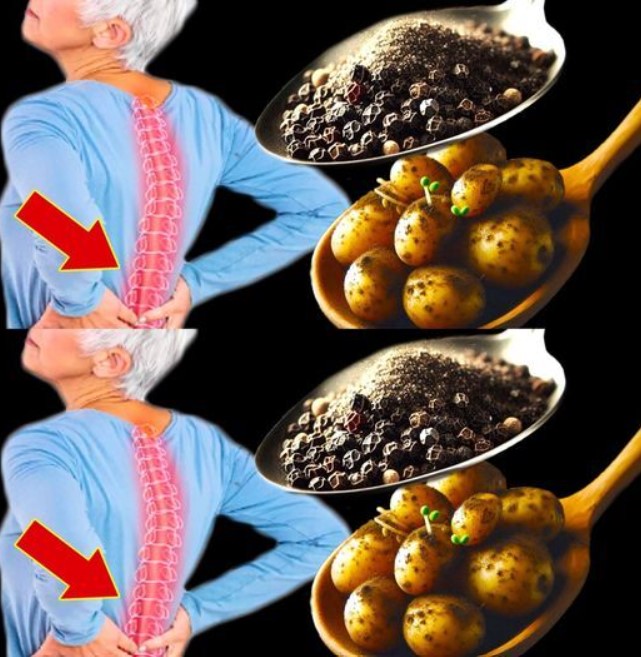Pain is a common experience that can range from a minor nuisance to a debilitating issue, affecting daily life and overall well-being. While over-the-counter medications and prescribed treatments are frequently used, they often come with side effects or may not always be suitable for long-term use.
Thankfully, your kitchen might hold the key to natural, effective pain relief. This article explores three powerful kitchen staples—turmeric, ginger, and garlic—that have been used for centuries to alleviate various types of pain. By harnessing their unique properties, you can find relief from discomfort using simple, natural remedies.
Turmeric: The Golden Healer
Turmeric, a vibrant yellow spice often found in curry powder, is renowned for its anti-inflammatory properties. Its active compound, curcumin, is celebrated for its ability to reduce inflammation and pain in the body. Research has shown that curcumin can effectively lower levels of inflammatory markers and inhibit pain-causing enzymes.
How to Use Turmeric for Pain Relief:
- Turmeric Tea: To make a soothing turmeric tea, boil water and add a teaspoon of turmeric powder. Let it steep for about 10 minutes, then strain and drink. You can enhance the flavor and benefits by adding a pinch of black pepper, which increases curcumin absorption, and a splash of honey.
- Turmeric Paste: For topical relief, mix turmeric powder with a small amount of water to create a paste. Apply this paste to the affected area, such as sore joints or muscles. Allow it to sit for 30 minutes before rinsing off with warm water. This can help reduce localized pain and inflammation.
- Golden Milk: Incorporate turmeric into your diet with golden milk. Combine a cup of milk (or a dairy-free alternative) with a teaspoon of turmeric powder, a pinch of black pepper, and a teaspoon of honey or maple syrup. Heat the mixture until it’s warm, and enjoy this comforting beverage before bed to help soothe aches and promote restful sleep.
Ginger: The Root of Relief
Ginger is another kitchen staple known for its pain-relieving properties. The active compounds in ginger, such as gingerol and shogaol, are powerful antioxidants with anti-inflammatory effects. These compounds help to reduce pain and inflammation by blocking pain pathways and neutralizing free radicals.
How to Use Ginger for Pain Relief:
- Ginger Tea: Brew a soothing ginger tea by boiling fresh ginger slices in water for about 10 minutes. Strain the tea and enjoy it plain or with a touch of honey. This tea can help with pain relief and also improve digestion.
- Ginger Compress: Create a ginger compress by boiling ginger in water and soaking a cloth in the mixture. Apply the warm, damp cloth to the painful area for 15-20 minutes. This method can provide relief from muscle pain and arthritis.
- Ginger in Meals: Incorporate ginger into your daily diet by adding it to stir-fries, soups, or smoothies. Regular consumption of ginger can help manage chronic pain and enhance overall health.
Garlic: The Powerhouse of Pain Relief
Garlic is not only a flavorful addition to many dishes but also a potent natural remedy for pain relief. It contains allicin, a compound with strong anti-inflammatory and analgesic properties. Allicin helps reduce inflammation and pain by inhibiting the production of inflammatory cytokines.
How to Use Garlic for Pain Relief:
- Garlic Oil: To make garlic oil, gently heat crushed garlic cloves in olive oil for about 10 minutes, then strain out the garlic. Massage the oil into sore muscles or joints to benefit from its anti-inflammatory effects.
- Garlic Paste: For topical pain relief, crush a few garlic cloves and mix them with a small amount of coconut oil to create a paste. Apply the paste to the affected area and leave it on for 20-30 minutes before rinsing. This remedy can help alleviate arthritis and muscle pain.
- Garlic in Food: Incorporate garlic into your diet by adding it to your meals. Eating raw or lightly cooked garlic can contribute to pain relief and overall health benefits.
Conclusion :
Incorporating turmeric, ginger, and garlic into your daily routine can offer a natural and effective approach to managing pain. These kitchen staples not only provide relief but also support overall health due to their anti-inflammatory and antioxidant properties. Whether you choose to make a soothing tea, apply a topical paste, or simply add these ingredients to your meals, the natural power of these remedies can complement your overall wellness regimen.
Embracing these simple, yet potent, solutions from your kitchen might be just what you need to ease discomfort and enhance your quality of life.
Credit: Barbara O’Neill Lectures










